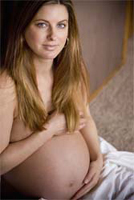Russia is experiencing a serious demographic crisis. According to forecasts, by 2051 the country's population can be reduced by a third - from 146 to 98 million. Human. Among the reasons for this «Traditionalists» Call widespread contraception.
Content
The most radically configured from them require restricting access to contraceptive means, to collapse the informational and educational activities in this area, believing that this way can change the situation for the better.
Whether contraception is guilty of reducing fertility?
Whether the use of modern methods of contraception leads to a reduction in fertility? Or is it myth? What actually affects the reproductive behavior of Russians? The head of the Center for Demography and Ecology and Ecology Center of the Institute of People's Economic Prediction of the Russian Academy of Sciences, Doctor of Economics, Academician Vishnevsky, expresses his opinion on this issue.
Russian population does not reproduce himself for 40 years
In Russia, the fertility began to fall back in the late 1920s and sank to a very low mark – below the level of simply replacement of generations – In 1964, earlier than in most developed countries. Since then, the net reproduction coefficient of the population remains below this critical level, with the exception of a short period of 1986-1988. This level of fertility makes the inevitable reduction of us which started in Russia in 1992.
which started in Russia in 1992.
For simple replacement of generations, it is necessary that a woman accounted for about 2.2 births, and this indicator is 1.3. Even if the mortality in our country was not so high, an extremely low birth rate does not allow to hope that the population decline will be able to stop in the near future.
The model of an old-fashioned family has become a priority
Installation on a small family is characteristic today for most Russians, there is almost no social or regional differentiation. Entrepreneur, engineer, teacher, worker, janitor have about the same number of children, no matter where they live, – in the center or depth. Significant differences are observed only at the level of ethnic differentiation, for example, in the republics of the North Caucasus, where the birth rate remains traditionally high.
Even improving economic conditions (high salary, good housing, etc.) does not always push women to make another child. Additional material capabilities of people today are aimed primarily on improving the quality of education – ensuring better education, diversified child's development and t.D. Benefits and benefits affect, rather, on «the calendar» the emergence of children in the family than their final number.
The demographic situation in Russia is developing in line with the processes occurring in all developed countries of the world. These processes are associated with a new type of reproduction of the population due to changes in socio-economic life, which in particular, led to the democratization of family relations, the emancipation of women, opened more opportunities for self-realization and meeting the needs of people.
It would be naive to believe that contraception itself serves as a reason for changes in reproductive behavior. On the contrary, it is these changes that threatened demand for contraceptives. Their widespread – Only a consequence of cancellation. Solution – How many children have, is determined by lifestyle, mentality, life values of a modern man. The model of a small family, alas, has become a priority for the overwhelming number of residents of developed countries.
Limiting access to modern pregnancy protection tools is unlikely to stimulate fertility. If a woman does not want to have children more than scheduled, she will rather go to the abortion than it will decide to give birth.
On the threshold of contraceptive revolution
Unfortunately, abortions still remain in Russia a very common way to regulate childbearing, although recently the number of them are stable reduced. If in 1995. 100 live births accounted for 202 abortion, then in 2002. - 139. The total abortion coefficient dropped from 3.4 abortion on average for one woman reproductive age in 1991. up to 1.8 V 2002.
2002.
The situation improves in all age groups. The number of abortions per 1000 women aged 35 years and older: in 1991. It was – 51, and in 2002. became – 21. In the youngest age group - from 15 to 19 years – It was 69 abortions, and it became 33.
The number of abortions is reduced against the background of the steady growth of the number of women using modern contraception methods. According to the Ministry of Health of the Russian Federation, at the end of 2001. 15.6% of all women of reproductive age used intrauterine spirals and 7.8% - hormonal means.
While the level of application of modern contraception means in Russia remains relatively low. The contraceptive revolution, which Western countries survived in the 60s – 70s, we still start.
Nevertheless, Russia moves from the situation when the main means of birth control was an abortion, to wider use of modern family planning methods. And this entails a decrease in maternal mortality, reducing secondary infertility, improving the reproductive health of a woman, which in turn positively affects the demographic situation.
Contraception prevents abortion, and not childbirth
Demographers' scientists are skeptical about the statements that extended access to contraceptive means leads to a decrease in fertility. This is a very primitive, superficial look at the problem. Contraception prevents abortion, and not childbirth.
There are many developed countries where contraception is spread much wider than in Russia, and fertility – much higher. For example, a well-known family planning policy is held in France, at the expense of insurance programs, consulting services for the use of contraceptives are paid.
Public awareness of family planning methods are much larger than in Russia, and the birth rate is one and a half times higher. Abortion, based on a hundred birth – five times less.
If we want to achieve at least such a fertility rate, as in France, - 1.9 births per woman, - should not impede access to contraception and not to require abortion ban – All this creates only the visibility of the struggle for raising the birth rate. The center of gravity of public efforts should be postponed to the creation of a social climate, conducive to the emergence of children and their upbringing, which was done in France for many decades.
Of course, serious measures are needed to support motherhood, state and society. But a meaningful family planning policy is also necessary for the formation of a favorable social climate. If it is not, there will be no conditions that make it possible to make a civilized choice for fertility control and apply safe and efficient contraceptive methods.









